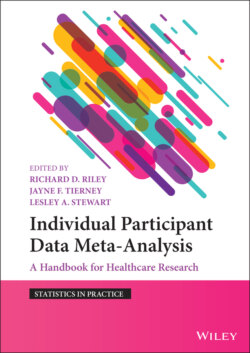Читать книгу Individual Participant Data Meta-Analysis - Группа авторов - Страница 75
4.2.4 Deciding Which Information Is Needed to Summarise Trial Characteristics
ОглавлениеAfter relevant trials are identified, it is important to obtain a good understanding of the attributes and characteristics of these trials, for descriptive purposes. This may include contacting trial investigators to request extra information about the trial population and treatment and control interventions. In addition, gathering structured trial‐level information about the methods of randomisation, allocation concealment, blinding, planned and actual recruitment, and any stopping rules that were applied can be valuable when assessing risk of bias (Section 4.6), particularly if these aspects are not clearly reported in trial publications.48 This may be particularly pertinent for older trials with limited documentation.
As there may be a considerable amount of information to collect, it is helpful to use a pre‐prepared paper or online data collection form, which may be included as an appendix in the project protocol and accompany the invitation to collaborate. An example is shown in Figure 4.3.
This form is also useful for seeking administrative details for each trial, such as the trial identifier and/or acronym, the International Standard Randomised Controlled Trial Number (ISRCTN) number (if relevant), trial title and up‐to‐date trial publication information. Also, it is worth including a question about whether the principal trial investigator will be the key contact for the IPD meta‐analysis project, or whether another individual, such as the trial statistician or data manager, will be responsible (providing space for their contact details). This would also be the place to ask trial investigators if they are aware of any potentially eligible trials not currently included in the draft protocol.
